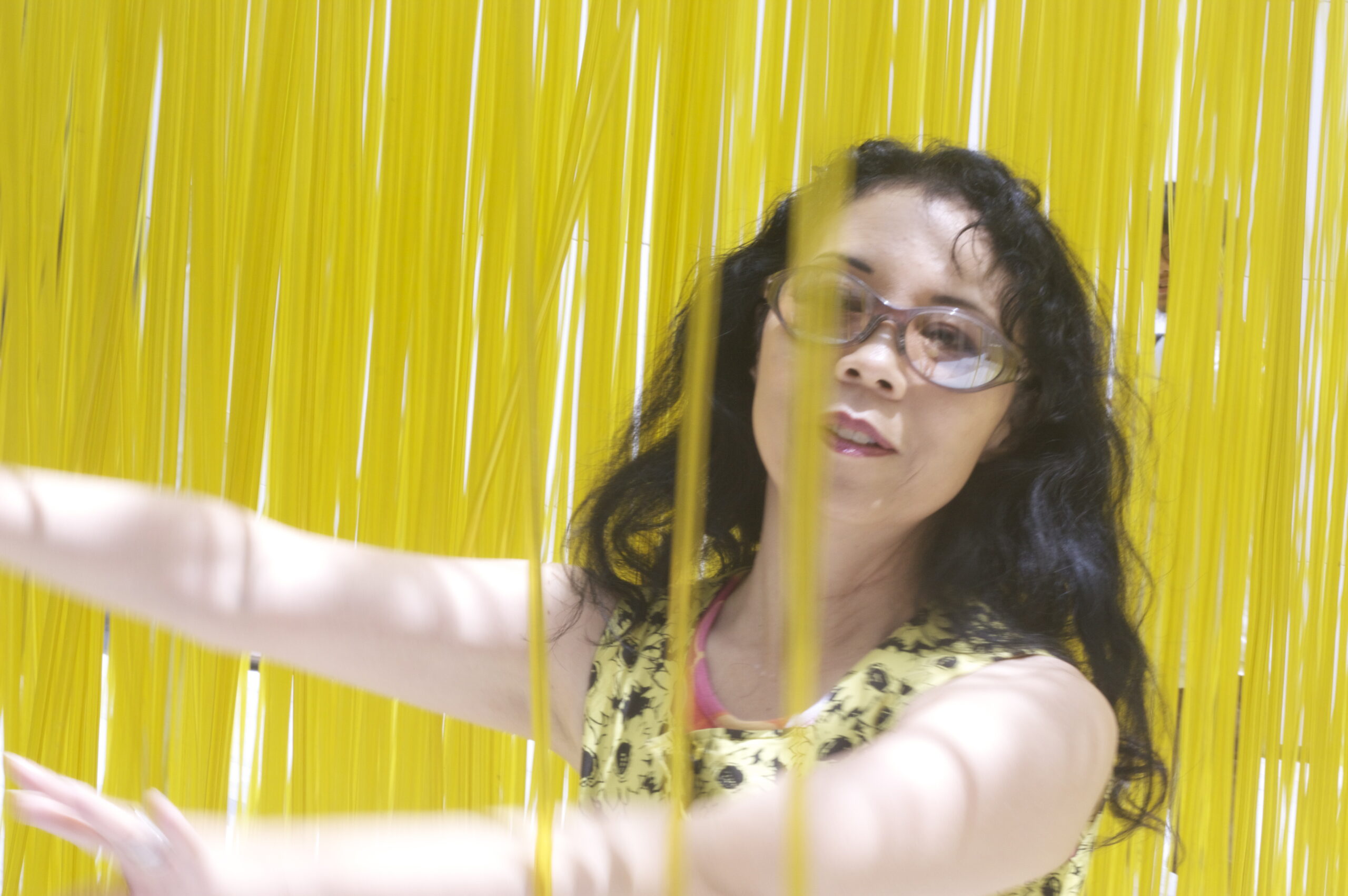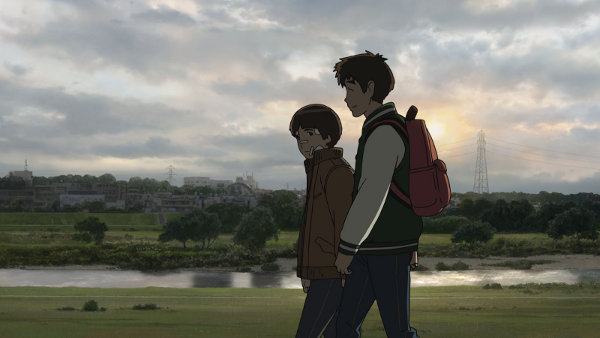“Colorful” is a thoughtful 2010 Japanese film that deals with a universal topic, but despite being nominated for a Japanese Academy Award (losing to “The Secret World of Arrietty”) didn’t open in the United States. Based on a novel by Eto Mori and directed by Keiichi Hara, the movie follows the dead soul who has been given a chance to redeem itself. The movie is currently available VoD on HuluPlus.
Hara made his name as director (1984-1986) for the TV animated series “Doraemon,” a cartoon about a robotic blue cat from the 22nd century. The cat travels back to the current era (the manga series first appeared in December 1969) to help a young adolescent boy Nobi Nobita.
If you don’t know Doraemon, you don’t know Japanese culture. Doraemon won the first Osama Tezuka Culture Award in 1994, Time Asia magazine called Doraemon an “Asian Hero” in 2002, and Doraemon was appointed the first anime ambassador by the Japan’s Foreign Ministry in 2008. That’s one cool cat with influence all over East Asia, making Hara an animation director worth noting.
“Colorful” is far removed from Doraemon. Doraemon’s world is filled with vibrant color, but despite the title, “Colorful” has a more subdued palette. Its scenario is more like “Heaven Can Wait” without the adult concerns of sex, love or lust, fame and fortune. Although lust and sex are alluded to briefly in “Colorful,” there is no on-screen nudity or graphic sexual situations portrayed. “Heaven Can Wait” emphasized the protagonist’s predetermined date with the Super Bowl, but in “Colorful,” instead of destiny, the focus is personal growth. Instead of cute animals, curious creatures or worlds threatened by greed or monsters that you might expect to find in a Hayao Miyazaki animated feature, “Colorful” is about the world of one soul and one boy whose body he inhabits and his family.
At first, we see a golden light against a mostly black background. Cutting away to a black background, we see white lettering: “I guess I must have died.” And then, another panel explains, “I’m okay with that.”
The light grows and we begin to make out shapes and words. We’re in a dimly lit transit center, in a world of faceless, sexless shadowy figures who walk slowly and nearly soundlessly. We hear shuffling and a train station whistle. Then our entity gets some surprising news, from a short gray-haired boy dressed in a school uniform of white shirt, blue tie, gray jacket and shorts. The boy, Purapura, excitedly tells our faceless mute protagonist, “Congratulations, you’ve won our lottery. You’re the sinful dead soul of one who made a terrible error.” Makoto has won the chance to discover what that terrible error was in a limited time he has back on earth.
Yet our protagonist isn’t elated by the news and still has its thoughts are projected against a black screen. “Are you an angel?”
Purapura (Michael) tells him, “If you think I am, then I am.” Angel or not, Purapura is a guide. He’s not a kindly guide like George Bailey’s wing-wanting Clarence of “It's a Wonderful Life” nor the anxious first timer from “Heaven Can Wait.” Later, we’ll see that he can get angry and even a bit jealous. He’ll appear to our protagonist from time to time, but remain unseen by the others.
Purapura takes this soul to the door of real life, an Art Deco-style door that opens up into a warm golden wood elevator compartment, but soon the soul is falling down into darkness and then to earth. The soul becomes Makoto Kobayashi (Kazato Tomizawa), a young boy in the hospital, opening his eyes under the intense white light. He finally has both a voice and a face. Makoto attempted suicide three days ago.
Hovering over him are a doctor and nurse, but also his family–his older brother Mitsuru (Akiyoshi Nakao), his father and mother. In this unfamiliar body, Makoto doesn’t remember everything and at first he’s grateful for his family. His father (Katsumi Takahashi) is a white collar worker who works too hard and drinks too much. His brother is smarter and will likely enter a good college unlike Makoto who doesn’t get good grades. His mother (Kumiko Aso) has been having a fling with her flamenco instructor, something that Makoto discovered inadvertently.
Eventually, Makoto returns to his school. At his junior high, Makoto has no friends. He’s short for his age and he’s infatuated with a fashionable young girl Hiroka Kuwabara (Akina Minami) who admires his painting but has other admirers.
If you remember your junior high school days, I hope they were pleasant. More likely you found out just how cruel kids could be and you became an expert on the world compared, at least, to your parents. I can attest that being short doesn’t help and I was snippy toward my mother.
Only Shoko Sano (Aoi Miyazaki), a girl in his art class, notices that he isn’t himself and Makoto slowly integrates into the daily routine of family and school. He soon learns that his crush Hiroka is prostituting herself out to buy the expensive things she wants. Makoto himself gets some stylish shoes, but that only attracts the attention of some bullies who beat him up and leave him on the ground unconscious.
Makoto is again hospitalized, but returns home after a few days. When Shoko visits him with some small gifts, Makoto is nasty toward her, something that concerns his mother.
In time, Makoto does become a nicer person. He befriends Saotome (Jingi Irie) and later, even Shoko. He no longer carries “the sadness of the whole world” but he knows his time in this borrowed body, what Purapura calls his homestay, will come to an end. Still he must contemplate his future in a school system where grades and test scores determine the high school you attend and eventually the college you’ll enter.
Like George Bailey, Makoto learns that his life mattered to other people. While in “Heaven Can Wait” it was an angel who acted too soon, in “Colorful,” the implication is that suicides leave life too soon. There is a happy ending and Makoto becomes true to his name, which means truth, honesty and sincerity.
This might seem like mild stuff to a Judeo-Christian audience where suicide is often seen as sinful. However, in Japan suicide has been seen as an honorable thing to do in the face of a shameful event. Traditionally, ritual suicide was for a small segment of the society, the samurai class. Later, in popular culture, suicide became the exit strategy for star-crossed lovers in a heavily stratified society as portrayed in Chikamatsu Monzaemon’s famous 1703 play “The Love Suicides at Sonezaki” (曾根崎心中 Sonezaki Shinjū) and his 1720 “The Love Suicides of Amijima” ( 心中天網島 Shinjū Ten no Amijima or Shinjūten no Amijima).
The 1962 Japanese period movie, “Harakiri” (切腹 Seppuku)–one of Roger Ebert’s Great Movies, is supposed to take place during the Edo period between 1619 and 1630. The historical events behind the 47 Ronin, known in Japan as <b>Chūshingura</b> (忠臣蔵) occurred between 1701 and 1703. The first fictionalized account of the events, the bunraku puppet play “Kanadehone Chushingura,” was composed in 1748 and other plays (bunraku and kabuki) and eventually movies followed. During the American Occupation of Japan, the General Headquarters banned performances of “Chūshingura” until 1947<b>. </b>
Yet decades after Japanese imperialism and World War II and centuries after the end of the samurai tradition, Japan has one of the highest suicide rates in the world. According to the Washington Post, South Korea tops the list, followed by Hungary, Japan, Belgium, Finland, France and Austria. In Japan, suicide prevention is a national concern. The majority of the suicides, about 70 percent, are men. To watch “Colorful,” is to acknowledge that worrisome part of Japanese culture.
A year after “Colorful” came out, a 13-year-old junior high school student committed suicide in Otsu (Shiga Prefecture) Japan after being bullied, even in front of teachers. Yet the bullying-related suicides happen in the United States as well. Just last month in the Florida, two girls were charged in the bullying death of 12-year-old girl
Although the United States is in not in the top ten, it is in the top 20 for suicides (per 100,000 people). That should make “Colorful” worth seeking out and watching because this animation sensitively contemplates a universal problem and displays a serious side of Japanese animation. “Colorful” is available VoD on HuluPlus.












